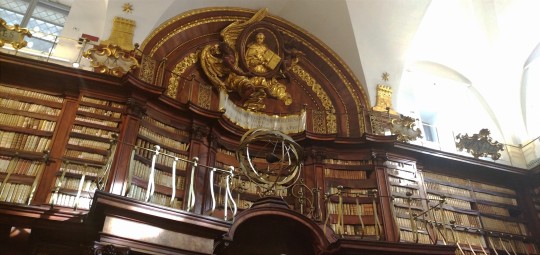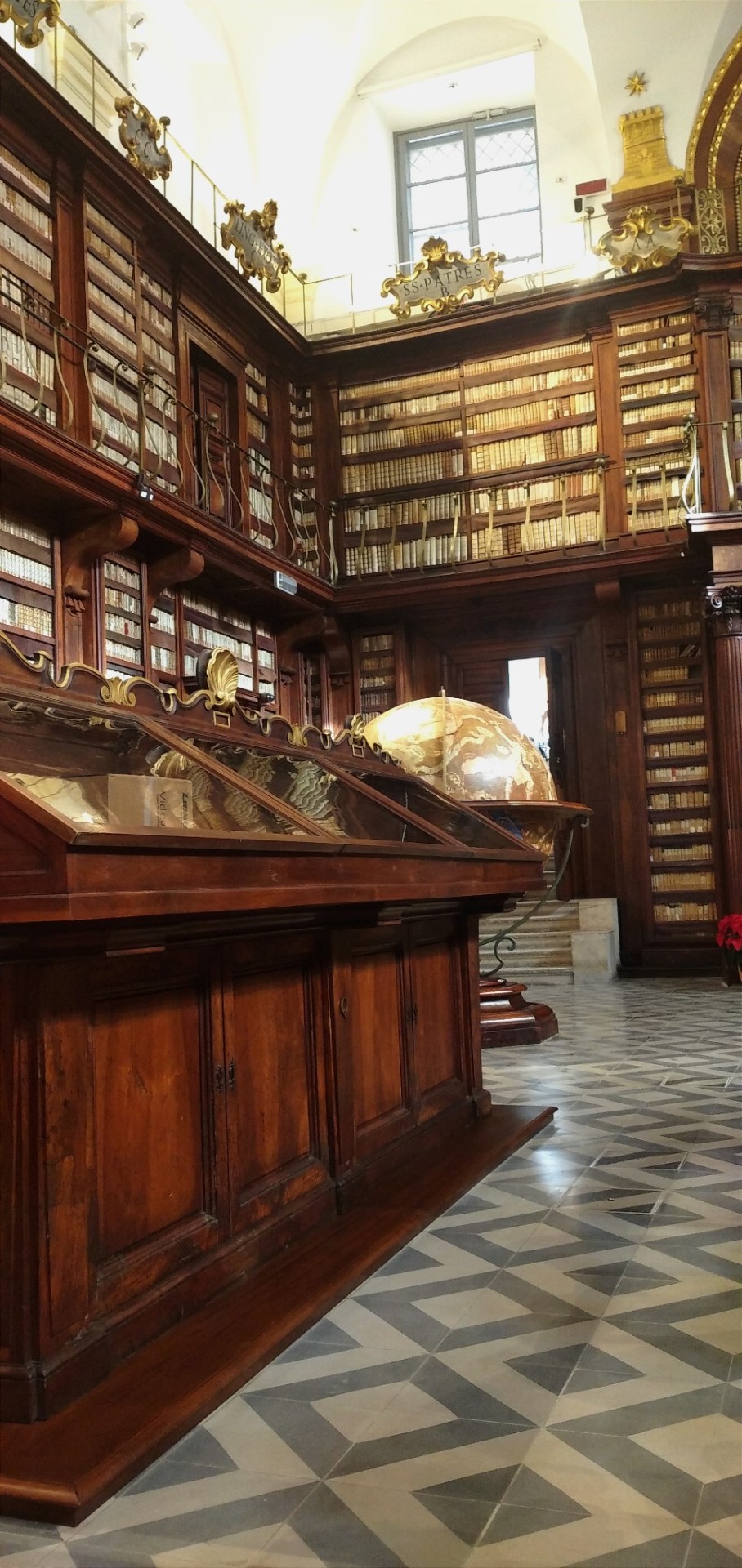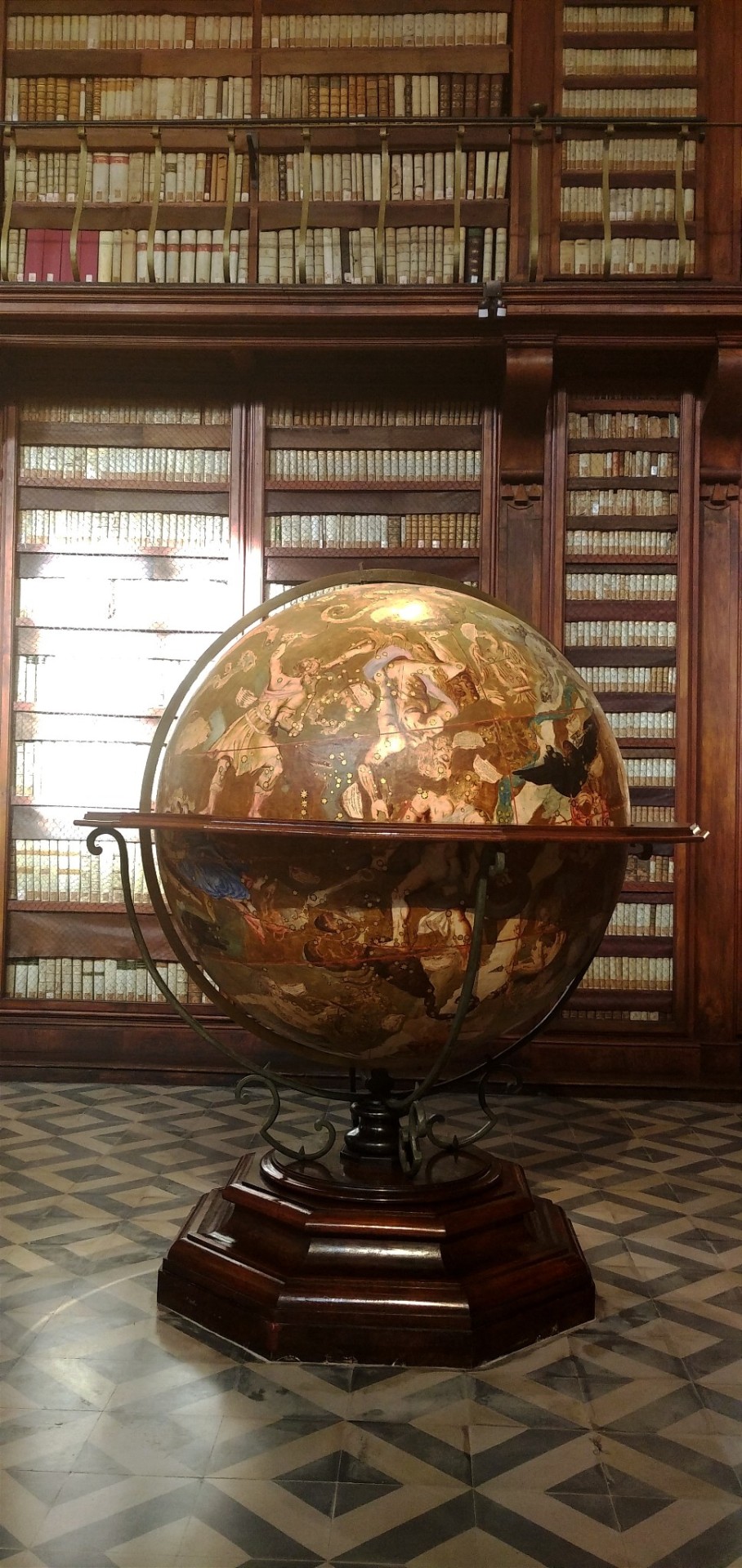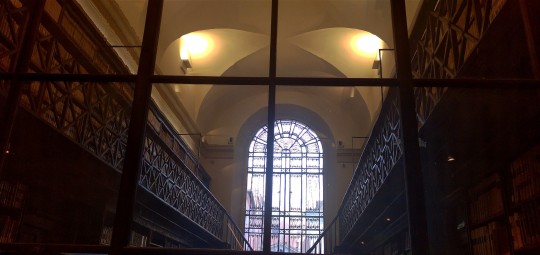#girolamo casanate
Explore tagged Tumblr posts
Text
“I've never seen so many books in all my life”
🕰️📖✨📜🕯️🌔








I've visited the Biblioteca Casanatense in Rome a few days ago and, as soon as I walked in, I felt exactly like Belle in THAT scene from Beauty and the Beast (you know the one) ♡
#living my best dark academia life ✨#dark academia#dark academia aesthetic#bookworm#books#ancient books#library#eighteenth century library#historical library#librarianship#library science#library science student#university student#university#academia#biblioteca casanatense#girolamo casanate#pierre le gros the younger#st thomas aquinas#bernardino cametti#rome#roma#photography#my photos#my pics
169 notes
·
View notes
Text
La Casanatense apre le porte al Sogno Americano
Una prestigiosa presentazione sia per il parterre e relatori che per la sala che ha accolto Il Sogno Americano, il libro-documentario dell’antropologo Giuseppe Cinquegrana e del giornalista Nicola Pirone, che nella giornata di giovedì ha raggiunto la Capitale. A fare da scenario la splendida biblioteca Casanatense di Roma, fondata dal cardinale Girolamo Casanate (1620-1700), che con testamento…
youtube
View On WordPress
0 notes
Text
Casanate, cardinale mecenate

Fonte: Wikipedia
Girolamo Casanate nacque a Napoli il 13 febbr. 1620 da Mattia e Giovanna Dalmau. Quest’ultima apparteneva a un’antica famiglia catalana molto nota in Spagna e già imparentata con i Casanate. Dopo essersi stabilito a Napoli nel 1619, il padre fece carriera nell’amministrazione (presidente della Regia Camera della Sommaria, membro del Collaterale, reggente di cancelleria) e fu…
View On WordPress
#Alessandro VII#Ancona#Biblioteca#cardinale#Clemente IX#Cultura-Barocca#Enrico de Noris#Francia#Girolamo Casanate#Historia Pelagiana#Innocenzo X#mecenate#Napoli#Pontefice#proposizioni#rigoriste#Roma#Stanza
2 notes
·
View notes
Photo





Salone monumentale della Biblioteca Casanatense (Roma).
Costruita da Antonio Maria Borioni tra il 1700 e il 1725 per accogliere il lascito di 25.000 volumi del cardinale Girolamo Casanate (1620-1700), è collocata all’interno dell’ex-convento domenicano di Santa Maria sopra Minerva, che fu sede dell’Inquisizione e che fu il luogo dove Galileo dovette abiurare. Attualmente la biblioteca è un istituto periferico del Ministero dei beni e delle attività culturali e del turismo.
#casanatense#biblioteca casanatense#girolamo casanate#roma#italy#rome#books#libri#library#biblioteca#bookshelves
29 notes
·
View notes
Photo





On the Tercentenary of the Death of Pierre Le Gros
By Gerhard Bissell
Pierre Le Gros died 300 years ago on 3 May 1719 in Rome where he had been a pre-eminent sculptor. No blockbuster exhibition will mark this event because he is now all but forgotten outside specialist circles, a fate he shares with nearly all artists of the late baroque period. The most virtuoso marble worker of his time, he excelled in convincing the eye to see the depicted materials rather than stone. His surfaces are so nuanced they nearly appear as different colours. And yet, he achieved that very rare feat of integrating these fine details into monumental sculptures without appearing grotesque.
Born in Paris in 1666 as the son of the eponymous sculptor serving Louis XIV, Le Gros won a Rome scholarship and went there in 1690. He duly studied at the French Academy until the occasion arose in 1695 to be part of the greatest artistic enterprise of the day: the monumental altarpiece of St. Ignatius in the Gesù, where Le Gros was given the over life-size group on the right hand side.
Recognising his extraordinary talent and speed, the Jesuits used him in the run-up to the Holy Year 1700 for the silver statue of St. Ignatiusas the altar’s centrepiece, and for the gigantic marble relief of St. Aloysius Gonzaga in Gloryfor the church of Sant’Ignazio – all delivered in time for the holy celebrations.
More Jesuit commissions soon followed like the statue of St. Francis Xavier (1702), a marvel of delicate marble work, and the vividly coloured St. Stanislas Kostka on his Death Bed(1702-03) whose aura still strikes even today’s sceptic visitors with pious awe; Kostkais nowadays Le Gros’ best known work if not his most typical.
So there you have it, Pierre Le Gros, the sculptor of the Jesuits. And that’s what he had been reduced to by much of art history well into the 20thcentury. But you’d be wrong.
There’s also Pierre Le Gros, the sculptor of the Dominicans. The order’s general, père Cloche, had big ambitions to boost the status of the Blackfriars, and found the sculptor to help him deliver. This started in 1697 with an upgrade for the tomb of the soon-to-be-saint Pope Pius V featuring an exquisitly modelled sarcophagus lid of gilded bronze echoing the recumbent holy body in bas-relief. Quickly followed a tomb and some years later a statue for Cloche’s friend Cardinal Casanate.
The new century also brought a new pope. Clement XI – very keen on art but short of cash – astutely offered the religious orders to honour their founders with a statue in St. Peter’s. Cloche immediately picked up on it and had the monumental St. Dominiccarved by Le Gros from 1702-06. Since nobody else saw the need for urgency, this was the only founder statue in St. Peter’s for decades until eventually the floodgates opened.
Le Gros was not content with just being successful, he wanted to be theleading sculptor in Rome, and he had high hopes for this pontiff to whom he dedicated his reception piece for the Accademia di San Luca in 1702.
The pope’s project to fill Borromini’s huge empty niches in S. Giovanni in Laterano with statues of the apostles was his chance. Around 1703, Le Gros submitted an exquisitely crafted terracotta model for St. Thomas reminiscent of Bernini’s Longinusin an exuberant baroque style – knowing full well that stylistic unity was paramount and that all sculptors were held to follow classicising models by Carlo Maratti, the pope’s favourite artist. This was a clear attempt to establish the Le Gros style as official guideline for all to follow, but late baroque classicism prevailed. He had to back down and finished his figur by 1711 in a fundamentally different, much more rigid fashion.
It was instead Camillo Rusconi, an admirer of Maratti’s style, who emerged a rising star from the Lateran campaign and was showered with papal praise while Le Gros was slowly sidelined.
Cardinal de Bouillon commissioned a dynastic tomb for the La Tour d’Auvergne family which arrived at Cluny abbey in France in 1709 but had the misfortune of not even being unpacked for nearly a century because Bouillon was by then declared an enemy of the state for grossly disobeying Louis XIV (the sculptures are today displayed in the Hôtel-Dieu in Cluny).
Le Gros’ S. Filippo Neri in Gloria, who appears as a dematerialised silhouette against the golden glow of the window behind, resulted from the cooperation with his close friend Filippo Juvarra on the architectural-sculptural ensemble of the Cappella Antamori in S. Girolamo della Carità (1708-10).
His last important work was the highly theatrical Tomb ofPope Gregory XV and Cardinal Ludovico Ludovisi(c. 1709-14) in Sant’Ignazio.
The remainder of Le Gros’ life is the tragic story of a downfall furthering a premature death. In 1713 he managed to alienate the Jesuits by being annoyingly stubborn, and in 1714 he found himself at death's door, suffering from gall stones. The need for an operation prompted him to travel to Paris in 1715, lodging with his faithful friend, the banker and great patron of the arts Pierre Crozat. While he might have considered to settle back in his native city, he was rebuffed by the French academy and decided instead to return to Rome in 1716 where he promptly had a run-in with the local Accademia di San Luca.
Siding with protestors against new statutes which subjected non-academicians to unjust fee payments, Le Gros was unceremoniously expelled, and his professional career in Rome thereby de facto finished. His only new commission thereafter was for two statues for Turin, without doubt due to the intervention of Juvarra who was by then architect to the Duke of Savoy.
Filled with bitterness, Le Gros died from pneumonia in 1719. He was posthumously rehabilitated and reinstated as a member of the Accademia di San Luca under the directorship of the Giuseppe Chiari in 1725.
Religion Overthrowing Heresy, 1695-99, Rome, Il Gesù, Altar of S. Ignatius
St. Aloysius Gonzaga in Glory, 1697-99, Rome, Sant’Ignazio
St. Stanislas Kostka on his Death Bed, 1702-03, Rome, Jesuit Novitiate at S. Andrea al Quirinale
The Arts Paying Homage to Pope Clement XI, 1702, Rome, Accademia di San Luca
St. Dominic, 1702-06, Rome, St. Peter’s
Apostle Thomas, Terracotta model, 1703, Los Angeles, LACMA
Further reading:
Gerhard Bissell, “Pierre Le Gros 1666-1719”, Reading (Si Vede) 1997.
Id., “A ‘Dialogue’ between Sculptor and Architect: the Statue of S. Filippo Neri in the Cappella Antamori”, in: Stuart Currie, Peta Motture (ed.), “The Sculpted Object 1400-1700”, Aldershot 1997, 221-237.
Robert Enggass, “Early Eighteenth-Century Sculpture in Rome”, University Park and London (Pennsylvania State University Press) 1976.
Pascal Julien, “Pierre Legros, sculpteur romain”, in: Gazette des Beaux-Arts 135:2000(1574), pp. 189-214.
François Souchal, “French Sculptors of the 17th and 18th Centuries. The Reign of Louis XIV”, vol. II, Oxford (Cassirer) 1981, vol. IV, London (Faber) 1993.
#art#italian art#18th Century#Rome#art history#Pierre Le Gros#sculpture#accademia di san luca#Filippo Juvarra#jesuits
45 notes
·
View notes
Text
Roma: La Biblioteca Casanatense dal 1701 ai giorni nostri
Roma: La Biblioteca Casanatense dal 1701 ai giorni nostri
VIRTUAL TOUR
La Biblioteca Casanatense è una biblioteca aperta nel 1701 presso il convento domenicano di Santa Maria sopra Minerva a Roma. Nata come biblioteca pubblica, ebbe come primo nucleo la collezione formata da circa 25.000 volumi che il cardinale Girolamo Casanate (1620-1700) donò, insieme con la somma di 160.000 scudi, con un testamento del 5 ottobre 1698, per realizzare una…
View On WordPress
0 notes
Text
When in Rome...see the street art on Via Girolamo Casanate
Just round the corner from Via Alessio Ascalesi, is another street in Primavalle (😍😍😍) dedicated to a Naples-born Cardinal, Via Girolamo Casanate. You can study the street art that has been painted on it below.
And an indication of some of the politics in these parts.
via Blogger https://ift.tt/2Kr6Z4Z
0 notes
Text
🕰️📖✨🐉📚🕯️📜








“I've never seen so many books in all my life”
🕰️📖✨📜🕯️🌔








I've visited the Biblioteca Casanatense in Rome a few days ago and, as soon as I walked in, I felt exactly like Belle in THAT scene from Beauty and the Beast (you know the one) ♡
#biblioteca casanatense#girolamo casanate#pierre le gros the younger#st thomas aquinas#bernardino cametti#eighteenth century library#historical library#library#books#ancient books#bookworm#librerianship#library science#library science student#university student#university#academia#dark academia#dark academia aesthetic#rome#roma
169 notes
·
View notes